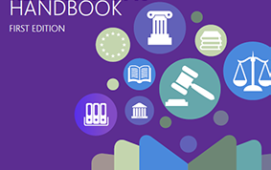This year’s Sibos was certainly not short of discussions about standards, but the actual physical location of the Standards Forum sessions (next to the Swift booth and beside the equally noisy Innotribe stand) was representative of the danger that Swift faces in this space: getting its message drowned out by background noise.
The communication about the slow progress towards the realisation of the investment roadmap is a case in point: silence for two years and then one announcement released alongside a barrage of others in the pre-Sibos lead up. Obviously, the investment roadmap is bigger than Swift, as it involves an increasing number of standards bodies (the latest addition being XBRL), but it is an important backdrop to the 2015 agenda. If Swift is ever going to be successful in migrating the securities industry onto ISO 20022 messaging, it needs to provide a great deal more clarity about the work that is going on behind the scenes.
As explained to me by a number of the International Securities Association for Institutional Trade Communication (ISITC) execs last week, the investment roadmap is the beginnings of a framework to determine who provides what in the securities messaging standards space and to build out interoperability between these standards. It all began with an informal conversation back in 2007 during Sibos in Boston, explained Gary Probert, chair of ISITC US and managing director, Securities and Funds Services for Citi’s Global Transaction Services. ISITC is therefore representing the vendor neutral interests of the industry in the standards interoperability discussions in light of the fact that coexistence is inevitable in the short term.
The long term view, of course, is to achieve some level of interoperability under the banner of ISO 20022 in the future, but it will take many small steps to get there. Which is why it is important to clearly communicate this progress to the industry at large.
For now, the roadmap only provides a basic snapshot of the standards patchwork as it exists at the moment. Probert indicated, however, that since the meeting of the group in June, there has been a commitment made by the key parties to engage with each other more regularly and to publish the roadmap on the ISO website. The real focus is on “collaboration” between the standards bodies and the industry, he explained. Steve Goswell, vice president of business operations at BlackRock and head of industry relations at ISITC US, added that as well as fostering collaboration, the goal is to eliminate duplication of effort and take some cost and complexity out of the equation.
To this end, the group of standards bodies has been doing something of a regulatory roadshow by visiting US regulators (and this week Europe is on the list) and explaining the current situation with regards to standards. “The biggest worry is that the regulators won’t understand the nuances of the business and that is why we are taking the time to visit Washington and the European Central Bank,” explained Goswell.
ISO chair Karla McKenna is on the road in Europe this week to do just that. “We are trying to raise awareness within the regulatory community about the standards that already exist out there, rather than trying to set policy. We are making them aware of the securities industry’s collaborative work on standards,” she told me last week.
So, industry associations, key standards bodies and Swift are communicating with the regulators about standardisation efforts, the trick is to now more effectively communicate this information back to the industry. Regular progress updates are promised on the roadmap, let’s hope they materialise.
In the meantime, Swift is also doing a fair amount of work behind the scenes around developing a legal entity identifier from the Bank Identifier Code (BIC), but not a single session at Sibos was dedicated to this topic. My panel on a securities reference data utility would have also lent itself to a Swift participant talking about this subject, but none volunteered. Seems like we’ll have to wait until Toronto next year to find out the score…
Subscribe to our newsletter




